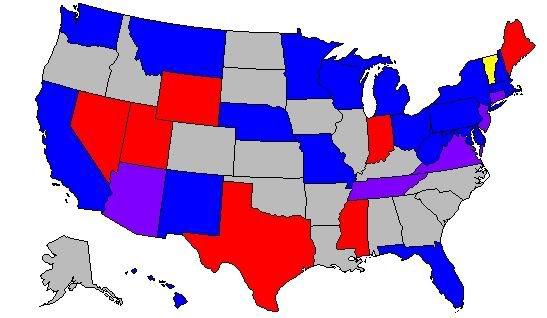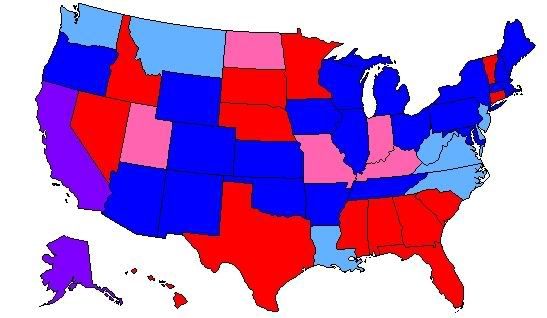They're different branches of different kinds of government, so it's not really a good or easy comparison.
The midterm elections are called midterms because they're in the middle of a presidential term. All 435 house seats have elections (these have elections every two years), 1/3 of the 100 senate seats have elections, and about 3/4 of states have governors elections. Those states w/o governors elections during midterms have them either the same year as presidential elections (WA, MT, UT, ND, MO, and NC), the year after presidential elections (NJ and VA), or the year before presidential elections (MS, LA, IN, and KY). Two states (NH and VT) have two year terms for governor, so their elections are held both in presidential years and in midterms.
As for the current senate, it's 55R, 44D, 1I. This is how I see the senate election shaping up:

giving us between 48D-1I-51R and 52D-1I-47R. I think it will probably end up at 50 or 51 Democrats plus a dem-leaning independent.
ON EDIT: I should add, the purple states are those that I think are currently too close to call. Connecticut is a special case, as either winner will be counted as a Democrat when congress reconvenes (well according to Lieberman that's what will happen if he wins :eyes:). The yellow state is a projected win by Bernie Sanders, an independent (socialist actually) who will caucus with the Democrats (just as he has in the House).
As for the number of governors, it doesn't really matter on a national level (aside from wanting as many states run by responsible adults as possible), except that governors tend to be more electable as presidents. Here is how I see the governors election shaping up (note that those states w/o elections this year are marked as either light blue or pink based on the party of the current governor).
